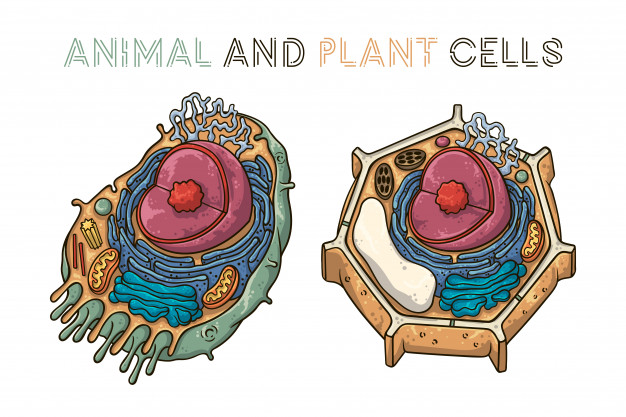The cell is the tiniest unit of life, and it is a basic component to specify us as living beings. Since its size is so tiny, it was not discovered until the microscope was developed.
It develops cell theory from the nineteenth and twentieth, which states that the cell is the structural unit of living beings and states that all living beings are made up of one or more cells. It is also considered a functional unit, as it fulfills all important functions (nutrition, relationships, and reproduction). Also, the cell is a genetic unit, which contains hereditary material and all come from another pre-existing cell.
In this article, you can find the main explained difference between prokaryotic and eukaryotic.
Different types of cells

Accordingly, a cell can be specified as the structural, functional, and genetic unit of all living beings, and can be categorized in several ways. Generally prokaryotic (or prokaryotic) and eukaryotic (or eukaryotic) cells. Then later, in turn, can be classified into animal and plant cells, although protozoa, algae, and fungi are also eukaryotic organisms.
What is eukaryotic?
The two large categories of cells (prokaryotes and eukaryotes) have similarities and differences. The first are unicellular organisms, which lack a defined or true cell nucleus, and in which DNA is spread through the cytoplasm. It is a bacteria. Eukaryotes are composed of organisms that are made up of a true nucleus, delimited within a double lipid layer, and with organized cytoplasm.
Differences between prokaryotic and eukaryotic

There are also some differences between prokaryotic and eukaryotic. Scientists conclude that eukaryotic cells have developed from prokaryotic cells.
But what are these differences? We explain them to you in the chart.
| Eukaryotic | Prokaryotic |
| Eukaryotic cells have a well-defined nucleus. Genetic information accumulates within the nucleus of eukaryotes. | Prokaryotes do not have na nucleus. |
| Eukaryotic cells originated over 2000 million years. | It is estimated that prokaryotic cells originate about 3700 million years. |
| Largest eukaryotes: 10–100μm in diameter. | Prokaryotic cells are small: 0.1–5.0μm in diameter. |
| multicellular eukaryotes | Prokaryotic cells are usually unicellular. |
| The genetic substance of eukaryotes is stored in the nucleus. | Genetic cells spread throughout the cytoplasm. The DNA of prokaryotic cells is not associated with histones. |
| In eukaryotic cells, there are sterols in the plasma membrane. | In the case of prokaryotic cells, only in mycoplasma. |
| Now, when it comes to eukaryotic cells, DNA is linear and, as mentioned earlier, it is associated with histone proteins. | In prokaryotic cells, DNA is spherical. |
| However, eukaryotic cells are present in many chromosomes. | Prokaryotic cells possess a single chromosome. |
| Eukaryotic is composed of phospholipids. | The plasma membrane is composed of peptidoglycan or murine. |
| In contrast, eukaryotic cells proliferate by mitosis and meiosis. | Reproduction in prokaryotic cells transpires by asexual reproduction, or by binary fission. |
| Eukaryotic cells are animals, plants, fungi, protozoa, and algae. | Prokaryotic cells are mostly bacteria. |
Similarities between prokaryotic and eukaryotic cells
While prokaryotic and eukaryotic cells differ in many ways, they also have some similarities. Both contain genetic material i.e. DNA. They have a cell membrane that covers them. Their basic chemical structures are similar, both are made up of carbohydrates, proteins, nucleic acids, minerals, fats, and vitamins.
Conclusion
Both prokaryotic and eukaryotic cells contain ribosomes, which produce proteins. Two types of cells control the flow of nutrients and residual matter that enter and leave cells. They also breed, although in different ways. They require energy to survive, they are the cytoplasm inside the cells and a cytoskeleton. Both categories of cells possess a lipid bilayer, known as the plasma membrane, that shapes the boundary between the inner and outer sides of the cell.





